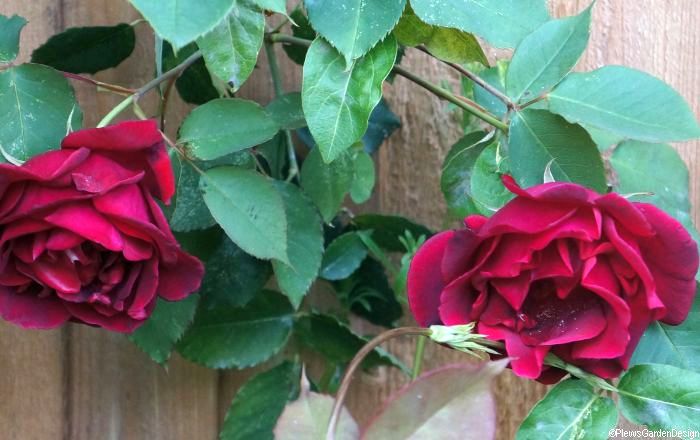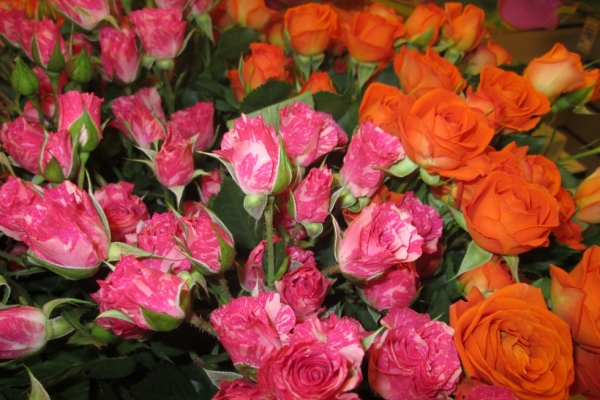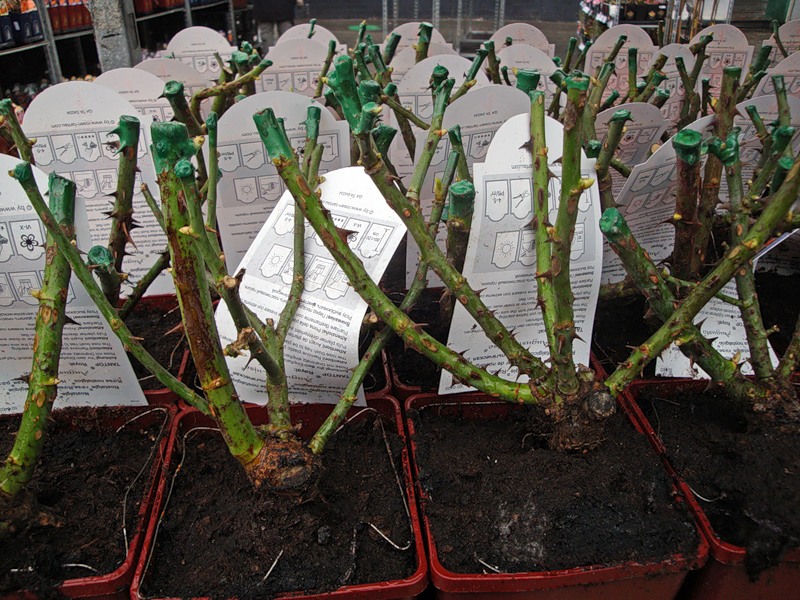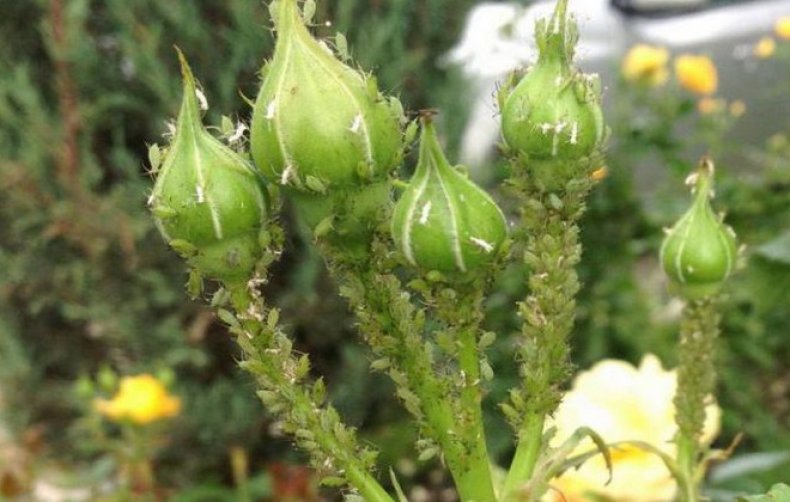Content:
The modern flower market allows you to choose roses for every taste. The most popular is the Ecuador rose, which has a magnificent appearance, delicate aroma and long-term freshness of cut flowers.
Description and characteristics
There are over 390 varieties of the Ecuadorian rose. The most popular varieties to this day are considered to be the flowers of which are painted in red, yellow and pink shades.
In Ecuador, roses are grown on the high slopes of extinct volcanoes. In these places, the most favorable type of soil for the growth of any color. This fact is explained by the fact that fertilization of bulbs with ash contributes to the active growth of plants. The large size of the stem part of the rose and large buds are achieved due to the long daylight hours, stable warm climate and fertile soil. It is the Ecuadorian roses that are painted in the brightest shades. Juicy colors of buds look very impressive in bouquets.
Rose Ecuador: popular varieties
Popular varieties of Ecuadorian roses:
- Grand Prix is a rose distinguished by bright burgundy buds, delicate aroma and double flowers, the diameter of which often reaches 12-13 cm.The height of the plant stem with thorns can exceed 1 m.
- Miss Piggy is a type of flower, the buds of which have the correct shape of the glass. Delicate pink petals curl into a peachy note in the middle of the rose. The height of the stem part reaches 70-80 cm, and the diameter of the flowers is in the range of 8-9 cm. Ecuadorian pink roses look amazing.
- Avalanche - large white roses with a greenish tint. The height of the stems is in the range of 100-105 cm. The diameter of the flowers is 8-9 cm. No description will convey all the beauty of the variety.
- Movie Star is an Ecuadorian rose with huge buds, the petals of which are painted in rich red-orange tones. The magnificence of this variety is difficult to convey in words.
- Limbo - pale yellow roses, on the petals of which you can clearly see the green tint. The height of the stems does not exceed 75 cm. The cone-shaped buds consist of petals with scalloped edges.
- Freedom is a plant with tall, goblet buds, the petals of which are painted in a red palette. The main difference of the variety is the preservation of the shape of the buds. Cut flowers can last more than 10 days in a vase.
- High & Magic - two-tone flowers. On the yellow petals, a dark red border along the petals is clearly visible. The length of the stem can reach 85-95 cm.
- Red rose Freedom, the petals of which have a corduroy texture. The length of the stem reaches 90-100 cm. Each bud of the Freedom rose consists of 44 petals, the height of which exceeds 6-6.5 cm. The length of the stems is within 55-60 cm.
- Rose Nina (Ecuador) is an elegant brick-orange flower, consisting of 40 petals, each bud is 5.5-6 cm high. Flowers of the Nina variety can be stored in a vase for more than 14 days. The rosehip got its name in honor of the famous singer.
Equally popular are such Ecuadorian varieties as:
- Kohala rose;
- rose Cupido;
- Rose Tiffany Ecuador;
- rose Finally;
- rose Paloma Ecuador.
Comparison of Ecuadorian roses with Kenyan and Dutch roses
In flower shops, you can most often find a rose from Ecuador, Kenya and Holland for sale. What are the differences between colors? Which roses are better: Kenya, Ecuador or Holland?
Among the main advantages of the Ecuadorian rose are:
- bright shades of buds;
- high level of color fastness after cutting;
- large buds and tall stem parts of the plant.
The disadvantages include:
- lack of a pronounced aroma;
- the presence of a balsamic smell.
The resistance of flowers to environmental conditions allows you to transport the prickly beauty across the oceans to other countries without damage for the purpose of further sale. After the transportation is completed, it is important to gradually transfer the rose from the refrigerator conditions. As a result of this feature, the period between the cut of flowers and their implementation is delayed. During this time period, the aroma becomes less pronounced.
The main advantages of the Dutch rose include:
- uniqueness of varieties;
- amazing appearance;
- unusual shades of buds.
Kenyan rose hips are marketed in a wide variety of varieties. Its buds can be classified as large and medium in size. The Kenyan plant pleases the eye with an abundance of shades of petals. A pronounced refined and unique aroma is to the taste of customers.
The main advantage of Kenyan varieties is the lifespan of cut flowers. Despite the long transportation, during which thousands of kilometers are covered, the rose will remain fresh for another 14-16 days. By following the recommendations of specialists, you can increase the life of the plant. To maintain freshness, you will need to refresh the cut every day and spray with clean water. A vase with a bouquet should be located in a cool room.
Features of planting and care
Growing an Ecuadorian rose from bouquets is a very complicated process. When the seedling takes root and the plant grows, it still does not have the same large buds as the original varieties from Ecuador. When grown in Russia, the seedlings lack heat and sunlight. In addition, the variety is forced to undergo adaptation to unusual climatic conditions. Cuttings very rarely let the root system, but it makes sense to try to grow an exotic flower at home. If desired, you can purchase ready-made seedlings, however, they are difficult to take root.
You can try to grow a beauty with thorns in a greenhouse. To grow a rose from a bouquet, you will need:
- Remove foliage, thorns and buds by cutting off the outer parts with a knife.
- In the lower part of the cutting near the edge of the bud, 3 oblique cuts should be made.
- The lower part of the cuttings is dipped for 60 minutes in a weak solution of potassium permanganate.
- After processing, the cuttings are laid out on paper to completely drain the remaining solution.
- A few hours later, the lower part of the cuttings is placed in a solution of a root growth stimulator.
When the cuttings form a root or a ready-made seedling is purchased, you can start planting the rose in a spacious pot, which will be located in the greenhouse.
- Having prepared the soil, you need to steam it in the oven for about 20 minutes.
- The soil is poured into the pot, and the soil is fertilized with a mixture of sand, peat and wood ash. The components are mixed in equal proportions.
- The cuttings are stuck into the ground with a slight slope up to half the length. The rest of the cutting is covered with a jar.
- Moistening the soil is required as the soil dries up.
- The jar can be removed only after the first 2-3 leaves appear.
As a rule, Ecuadorian roses take root only after 60 days. After the first flowering, it is important to cut the wilting flowers from the bush so that the plant does not disappear.
Major diseases and pests of crops and control measures
Pests such as the following can harm an Ecuadorian flower with thorns:
- leaf beetles;
- aphid;
- field bug;
- golden bronze;
- nematodes.
You can cope with pests with the help of treatments with special preparations or systematically watering the bushes with infusions of yarrow, garlic and onions.
Systematic fungicide treatment can prevent the appearance of downy mildew and black spot.
Roses of Ecuador are amazing flowers that are often presented as a gift, wanting to surprise and delight a loved one. The abundance of varieties allows everyone to choose a flower to their liking.


















